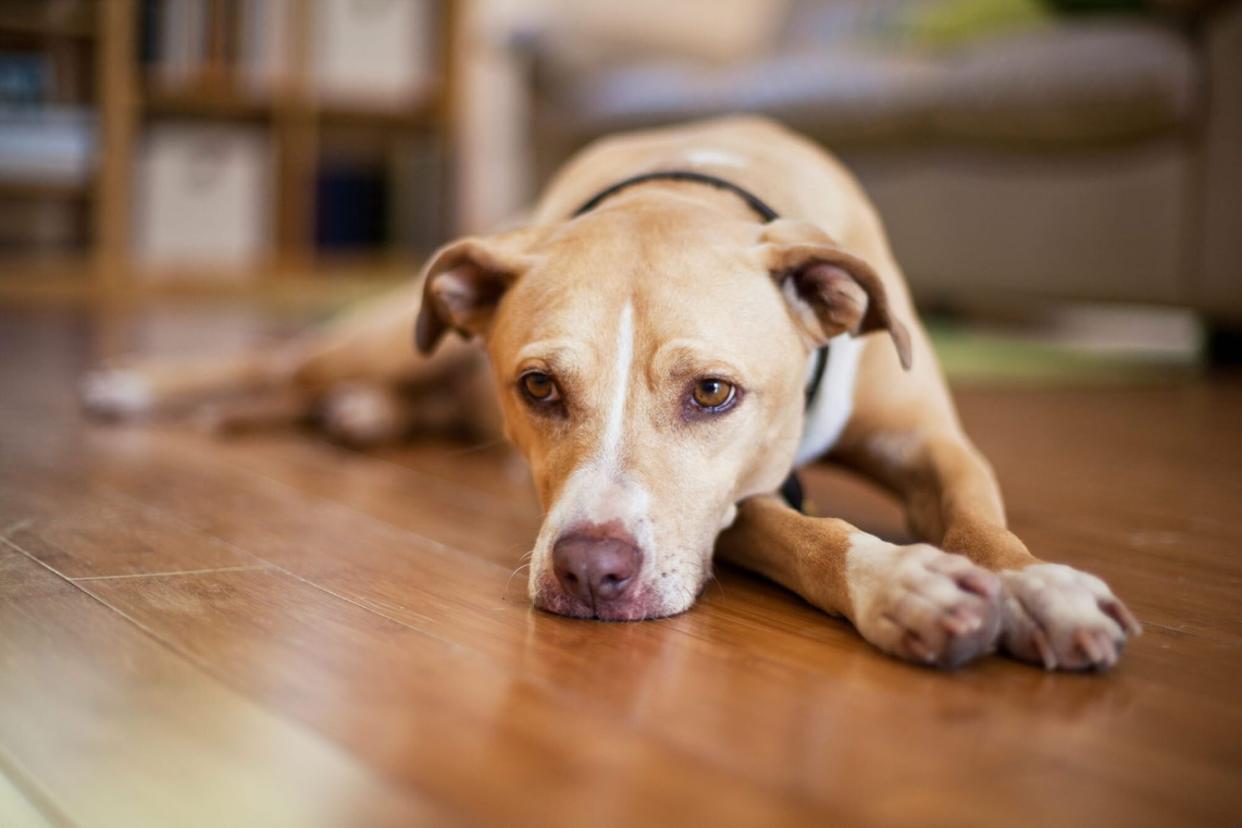Recent Dog Flu Outbreaks: Why Your Pup Might Need Another Shot

AMR Image / Getty
Here's hopefully your last reminder to get your flu shot. And while you're at it, maybe schedule one for your dogs, too.
Yes, there's a dog flu—a couple versions in fact—and it's caused recent outbreaks across the United States, forcing animal shelters to pause adoptions and closing doggy daycares, according to a New York Times story published Friday.
The viruses spread through the air, so places where dogs congregate, like dog parks, can be risky. Thankfully, you can take some steps like vaccination to keep your dog feeling good. Here's what you should know:
Where Have the Dog Flu Outbreaks Occurred?
The Times reported canine influenza cases in Texas, South Carolina, Alabama, and Tennessee this year, though the flu also sickened hundreds of dogs in the Los Angeles area during the last half of 2021.
One shelter, the Greater Birmingham Humane Society in Alabama, had to pause adoptions for six weeks and euthanize several dogs who were severely sick, the newspaper reported. The virus has since returned.
"The impact on canine facilities is significant because the virus is highly contagious," says Jenna Stregowski, RVT and Daily Paws' pet health and behavior editor. "Overcrowding can make it spread even faster."
RELATED: Why Is My Dog Coughing Up White Foam?
Operation Kindness, a Dallas-area organization, told the Times that 86 percent of its dogs had become ill last month as the super-contagious H3N2 strain swept through the shelter.
Two viruses, H3N8 and H3N2, cause the canine flu. Both spread through the air, so dogs can catch it when they're near an infected dog who barks, coughs, or breathes near them.
So while you might not live near one of the outbreaks, a traveling dog could bring the flu to your community. (Influenza in cats also exists, but Stregowski says it appears to be less common.)
How Can I Keep My Dog Healthy?
Canine flu symptoms include coughing, sneezing, eye and nose discharge, fever, lethargy, and trouble breathing. There are limited treatment options after a dog becomes infected, and serious cases can progress to pneumonia, which puts some dogs at risk of death.
But: There is a vaccine. It's not a core puppy vaccine, but dogs at risk of catching either flu virus can receive it. Check with your dog's veterinarian.
If your dog is unvaccinated or you're still worried about it, there's still a way to avoid the flu. It's avoiding other dogs, Stregowski says. You have to decide whether you want to risk going to gotcha day parties, daycare, or the boarder. If you really want to take your dog to the park or to a party, perhaps check with your vet to see if they know of any flu cases in your area.
RELATED: SARDS in Dogs: How to Help Your Pup With Sudden Vision Loss
And while we don't want to talk about the pandemic anymore, the 2020 protocol can make a difference, too.
"Pet parents might want to think of this like COVID-19 precautions but for dogs," Stregowski says. "And since dogs can't wear masks, social distancing is even more essential."
If your pup does come in contact with an infected canine, contact your vet right away so you can get treatment started—and hopefully prevent the more-serious pneumonia.

